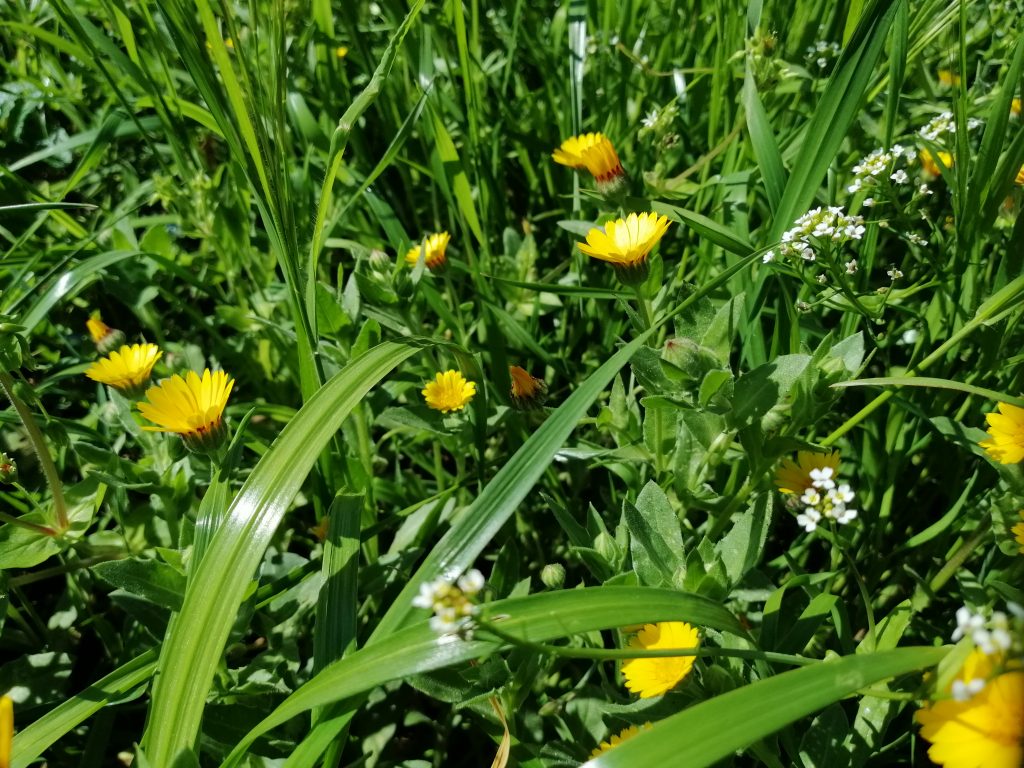
April 2019, 1st and 2nd, first days of the second month of Spring. The name April comes from the Latin “(mens) aprilis”, that, in turn, according to some authors, comes from the greek ἀφρός (aphròs), that means foam, in reference to the foam from which Venus, the goddess the April month was consecrated to, was born; according to other authors, the month name comes from the Latin verb “aperire”, that means to open, because this is the month during which flowers and buds opens up and, more generally, the Earth and the Nature “opens” to the renewal of the life.
During these two days, the Moon is in the sign of Aquarius, an air sign, and so, according to the biodynamic calendar, they are suitable to flower collection. For this reason, we have spent them collecting the flower heads and tops of the field marigold, Calendula arvensis (Vaill.) L., an herbaceous and annual/biennial plant, intensely odorous due to a resinous essence endowed with a smell that is herbaceous and pungent at the same time.
Analogously to his more known and “noble” (just because widely cultivated) relative Calendula officinalis L., field marigold is linked by tradition to the Sun. The stellate shape of the flower heads and their color, that spans from yellow to deep orange, recalls almost immediately our Star; but their heliotropism too invigorates this connection: the flower heads, indeed, opens up at the sunrise and follow its path during the whole day, turning from East to West, and closing on sunset and during the cloudy days.
Nicholas Culpeper, a XVII century British physician, in his “Complete Herbal” writes about marigolds:
“Government and virtues. It is an herb of the Sun, and under Leo. They strengthen the heart exceedingly, and are very expulsive, and a little less effectual in the smallpox and measles than saffron. The juice of Marigold leaves mixed with vinegar, and any hot swelling bathed with it, instantly gives ease, and assuages it. The flowers, either green or dried, are much used in possets, broths, and drink, as a comforter of the heart and spirits, and to expel any malignant or pestilential quality which might annoy them. A plaister made with the dry flowers in powder, hog’s-grease, turpentine, and rosin, applied to the breast, strengthens and succours the heart infinitely in fevers, whether pestilential or not.” [Culpeper]
This passage almost conveys a “felt” impression that the plant is imbued of the very nature of the Sun, condensing in its juices and flowers a warming and comforting therapeutic quality that is transferred to the heart and “spirits” (we now would say “mood”) of whoever takes it, whichever be the way. Indeed, the smell that comes from the plant during its processing is decidedly invigorating and comforting.
Perfectly edible in all its parts, its leaves have a strong taste and a resinous flavor, reason why they should be used only sparingly. Its petals can be used to decorate salads or as a substitute for saffron.
It’s a warm and dry herb that has a special affinity for the body fluids and moves blood and lymph: indeed, it’s a safe and effective emmenagogue (it induces the menses) drug, that is able to reduce decidedly the menstrual cramps (it cures amenorrhea and dysmenorrhea); it’s a good lymphatic remedy and is indicated for infections, especially the long-time unresolved ones; it heals the wounds and the bruises; it helps to prevent and cure colds and flu and to “expel” smallpox and measles.
Since it’s an emmenagogue, it’s advisable not to use it during pregnancy.
Riferimenti:
[Culpeper] Nicholas Culpeper, “Complete Herbal” (1653)
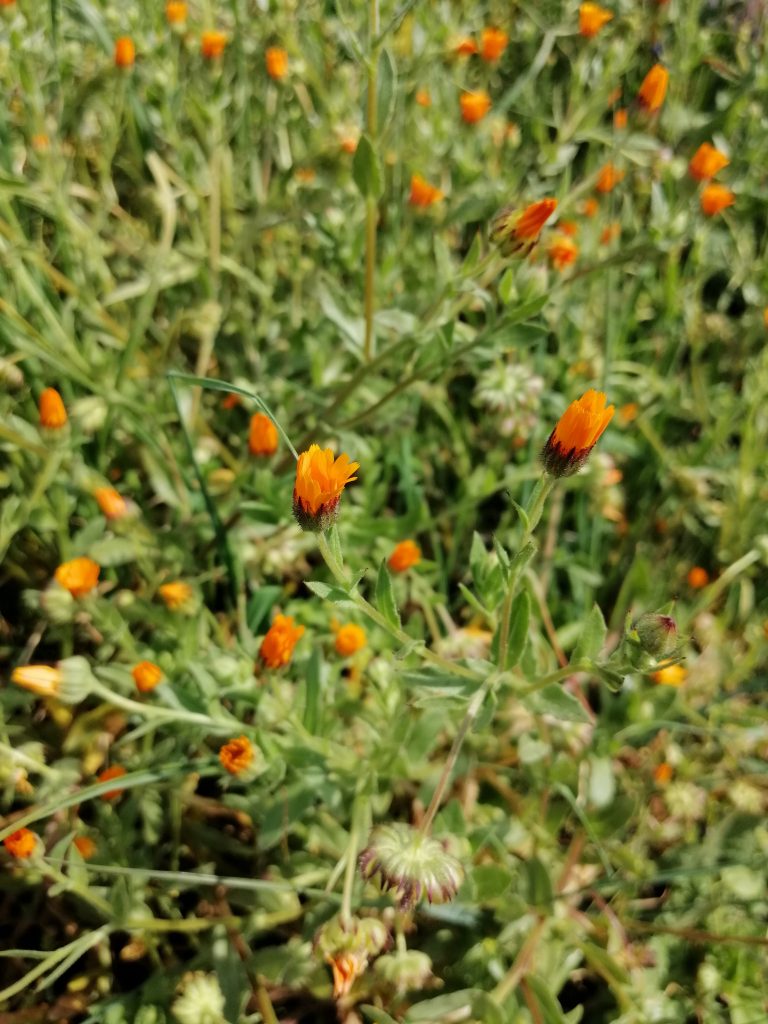
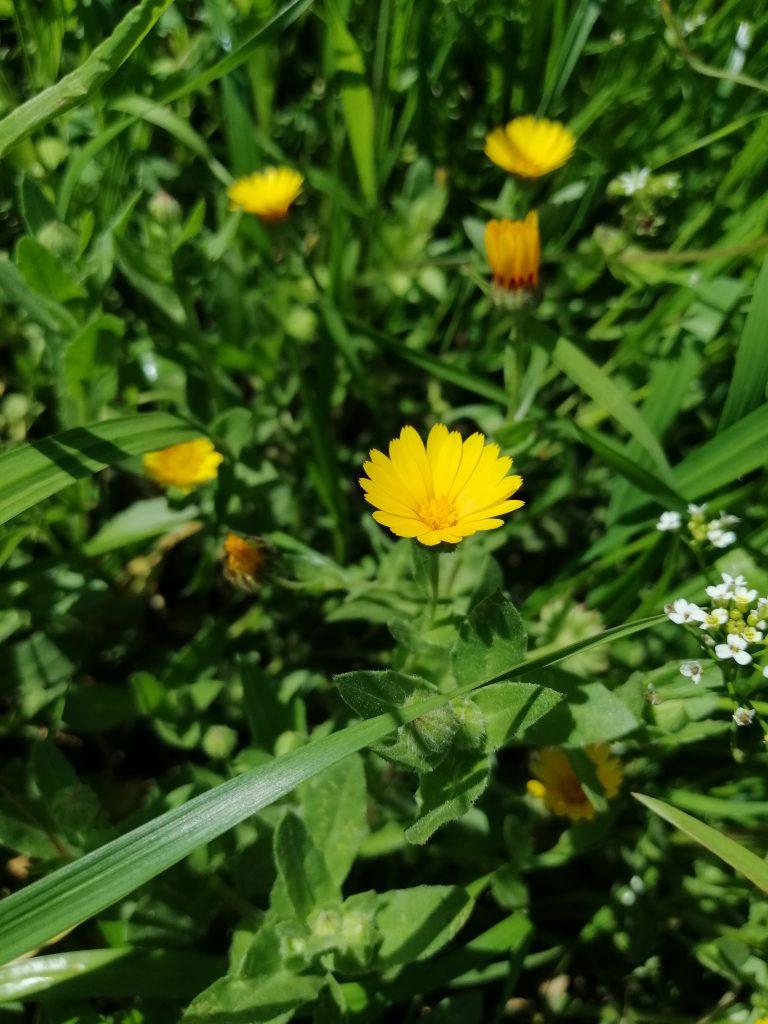
A field marigold flower: a miniature Sun 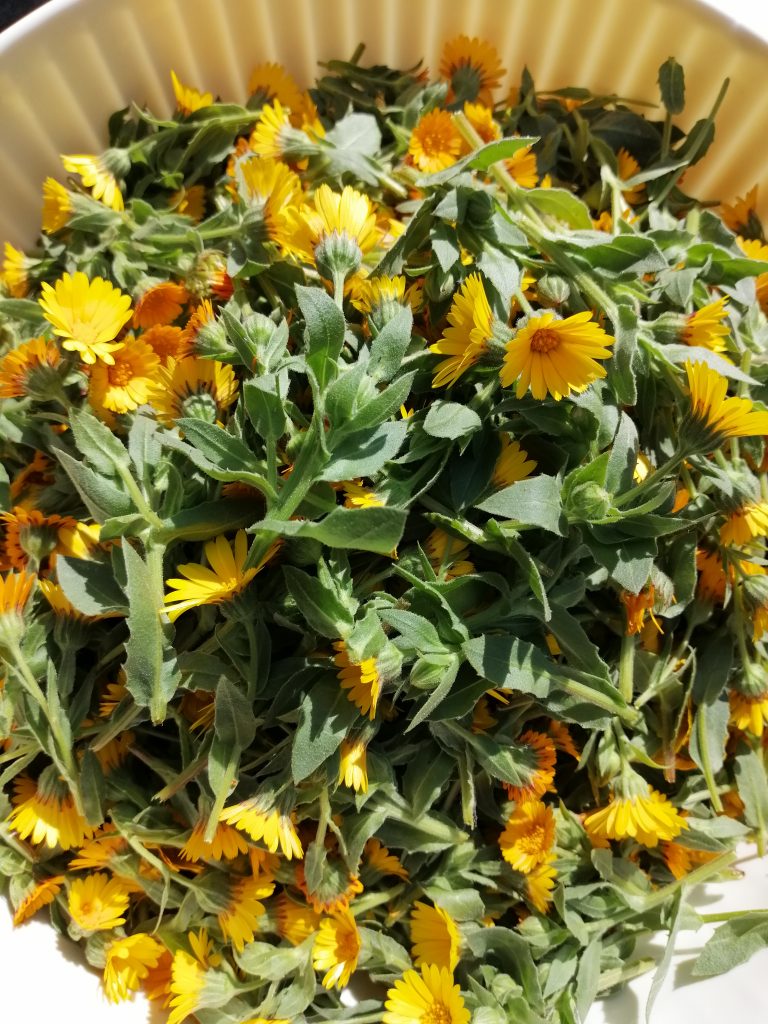
Flowered tops used for tincture making 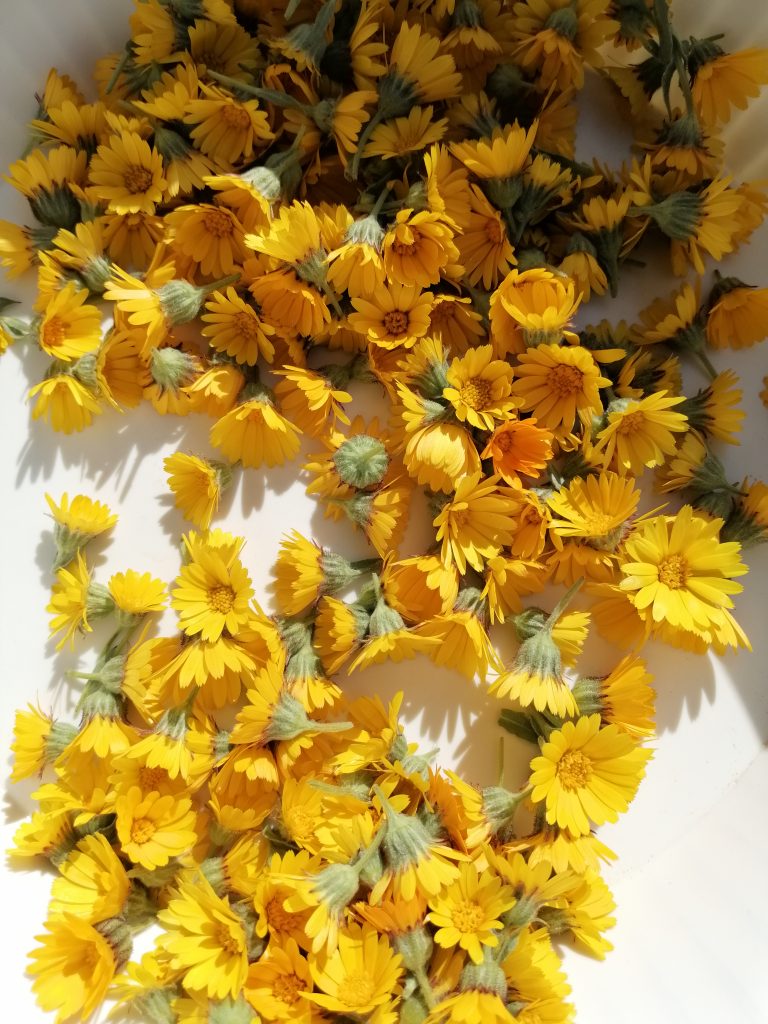
Flower heads used to prepare an infused oil 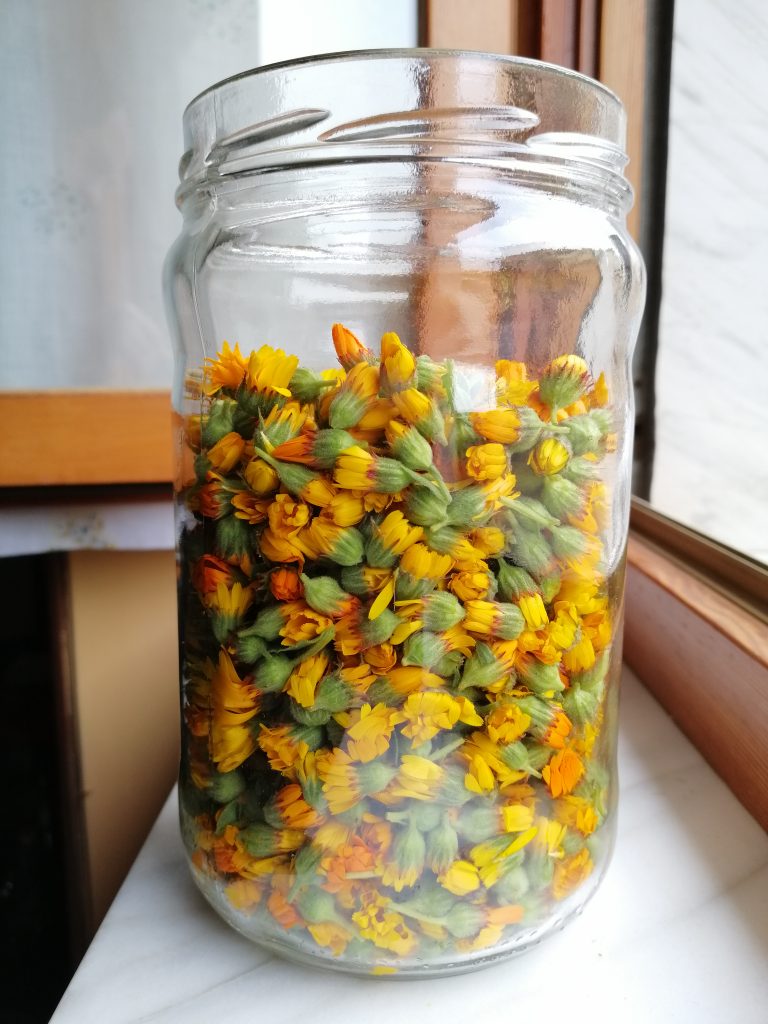
Preparing the infused oil 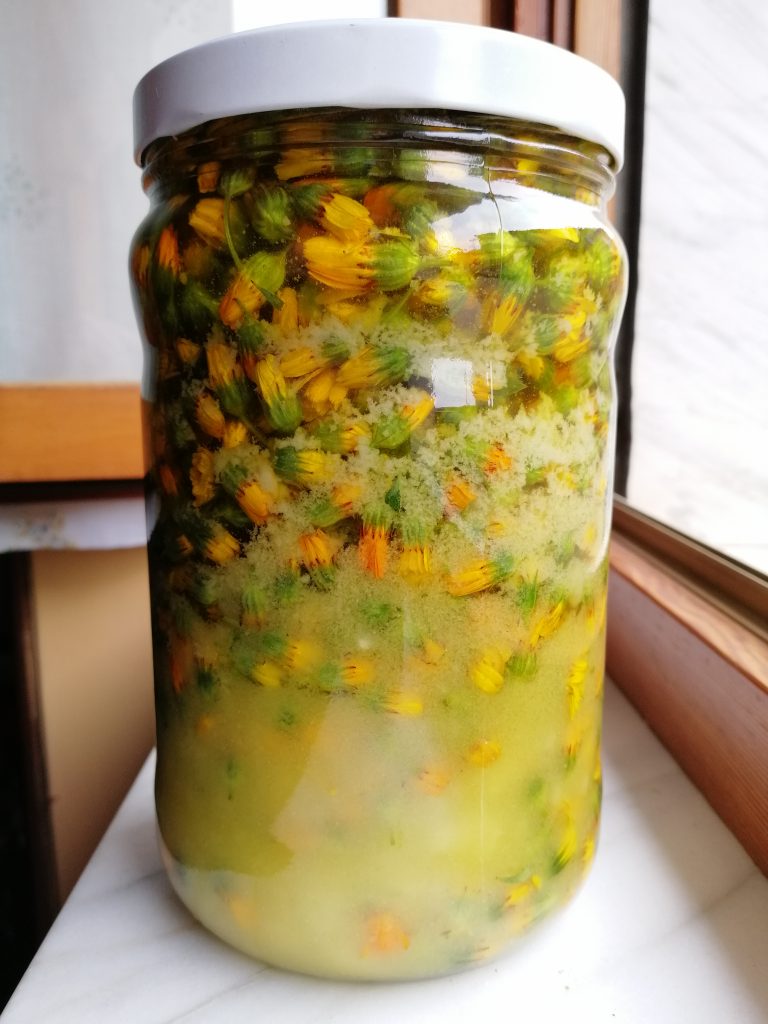
Infused oil ready to be exposed to Sun



